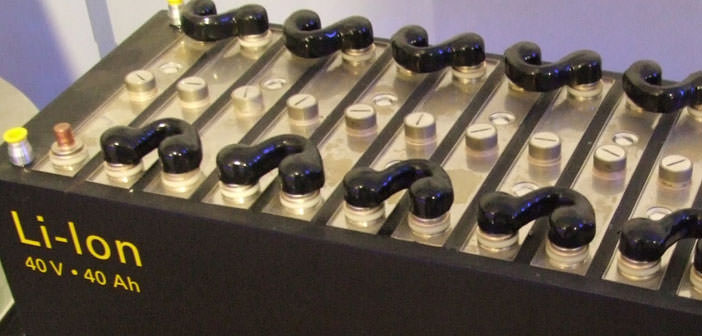At MIT has been experienced a production method of the electrodes using a magnetic field allows to suitably orient the electrode graphite particles, improving the efficiency of the battery.
The research activities focus on new battery technologies never cease to identify promising approaches for the realization of charging accumulators from the best overall performance. On the last edition of Nature Energy, it was published the research of a group of MIT scientists that demonstrates how the use of a suitable magnetic field in the phase of production of a lithium-ion battery allows to obtain an increase in performance, thanks to a alignment of graphite flakes in the electrodes which promote a more efficient movement of charge carriers within the battery.
The electrodes of lithium-ion batteries are often made using graphite, a material that balances attributes such as high-energy density with the non-toxicity, safety and low cost. The graphite, a succession of stacked sheets of carbon atoms, is often found in these electrodes in the form of flaky particles.
The downside is represented by the fact that graphite restricts the movement of lithium ions, which is crucial in charging and unloading. In particular, the lithium ions are able to move within the plans between the carbon sheets and are often found to travel long complex Duranti journeys to the charging and unloading. The improvement of this aspect leads to the improvement of the overall performance of the battery.
The researchers then had the idea to appropriately align the graphite flakes so they can engineer a more linear path for the ions, using magnetic fields. It was necessary to circumvent a problem before proceeding: graphite is inert to magnetic fields.
Problem actually solved with relative ease, employing a covering of superparamagnetic iron oxide nanoparticles on graphite flakes. The coated flakes were suspended in ethanol.
During the construction of the electrodes, the graphite particles were oriented using a rotating magnetic field aligned perpendicular to the current collector, part of the battery takes place where the exchange of charges with the graphite.
To align the flakes was necessary to use a magnetic field of 100 meters: by reference just think that the machinery for MRI uses magnets to 1.5T. Researchers have finally made of the gate electrodes in the traditional way, as a reference and comparison.
The researchers then assessed the alignment of graphite flakes in both situations: visual analysis shows a clear orientation of the flakes of the electrodes made with the interaction of the magnetic field, which have appeared inclined at an angle of 60° with respect to the plane of the current collector. In the electrodes made with a traditional method, the flakes were mostly parallel to the current collector.
The experiments conducted to assess the change in the path taken by the lithium ions have shown that the influence of the magnetic field reduces the tortuosity of the paths by a factor 4 compared to the comparison electrodes.
This aspect allows to increase the storage capacity of the lithium in the electrode by a factor between 1.6 and 3.

